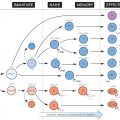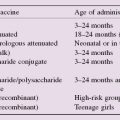The ability to sense the presence of microorganisms that could cause potentially dangerous infections is a widespread property of cells, tissues and body fluids of all multicellular organisms. This process is called innate immune recognition. This recognition process is the first crucial step triggering the complex sequence of events by which the body protects itself against infection. However, it is only since the 1980s that most of the molecules (receptors) responsible for this recognition process have been identified, and new examples of such innate receptors are still being found. The receptors usually recognize components of microorganisms that are not found on cells of the host, e.g. components of bacterial cell wall, bacterial flagella or viral nucleic acids. These target molecules have been named pathogen-associated molecular patterns (PAMPS), and the receptors that recognize them pattern recognition receptors (PRRs). Engagement of PRRs by PAMPs results in activation of intracellular signalling pathways, resulting in alteration in gene transcription in the nucleus (left part of figure) and ultimately a whole variety of different cellular responses, broadly termed inflammation (illustrated in Fig. 7). Some innate immune receptors are also triggered by damage to cells that arises in the absence of any infection, giving rise to the term damage-associated molecular patterns (DAMPs). The activation of innate immunity is an essential prerequisite for activation for most adaptive immune responses. The major families of PRRs, the structures they recognize and their location within the cell are shown.
Leucine-Rich Repeats (LRR)
A ubiquitous protein structural motif, forming a ‘horseshoe’-shaped fold, with an exposed hydrophilic surface and a tightly packed internal hydrophobic core. It is so named because it contains unusually large numbers of the hydrophobic amino acid leucine. LRRs are frequent components of PRRs, where they are thought to mediate the interaction between the receptor and the target structure on the microorganism. Families of proteins containing LRRs may also serve primitive antibody-like functions in several types of invertebrates (see Fig. 46).
Toll-Like Receptors (TLR)
Toll-like receptors are so named because of their homology to a gene named Toll (from the German word for ‘amazing’ or ‘mad’!) first identified in Drosphila
Stay updated, free articles. Join our Telegram channel

Full access? Get Clinical Tree





